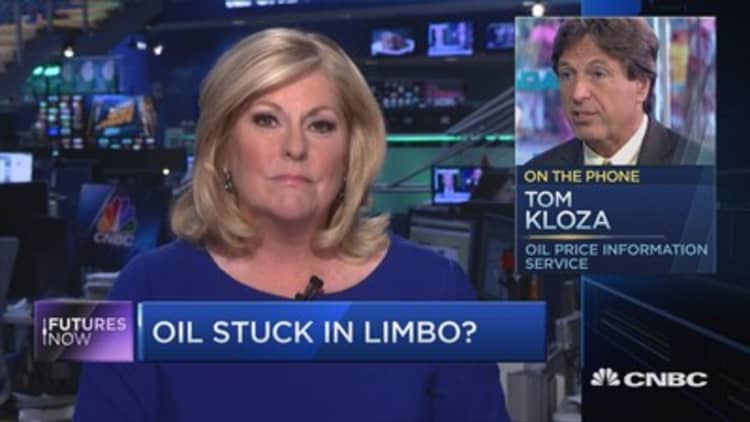


Crude oil is in the ultimate game of tug-of-war—and it's not going to change any time soon, says one of Wall Street's top commodity analysts.
A whipsaw week saw crude set its biggest weekly loss since mid-September, with Brent ending the week under the psychologically important level of $50 per barrel.
"There's probably a sweet spot between $50 and $55, but I think we're setting ourselves up for some sort of a disappointment at the OPEC meeting," explained Tom Kloza on CNBC's "Futures Now" last week. "I think the language is probably going to be thoroughly bullish. They'll pay lip service to some sort of a freeze."
However, talk has recently proven to be cheap—if not worthless—with the cartel. Crude traders doubt OPEC will be able to stick to its plans of a production cut, which helped send prices down last week.
The global head of energy analysis for the Oil Price Information Service (OPIS) highlighted that issues would arise in any agreement because a freeze would be occurring at record production levels.
From there, Kloza doesn't feel that non-OPEC member Russia would cooperate with any agreement. That would ramp up pressure on Saudi Arabia to reject the final terms of an OPEC freeze given the Kingdom's deep-seeded resentment of Russia's energy agenda.
Meanwhile, another issue could arise from OPEC member Nigeria, if the nation floods the market with oil. The country's production recently came back online following war-related outages.
Given the potential for these bearish developments, Kloza explained that he sees $50 as a "fair" price for oil for the remainder of the year, but added that there could be a little more turbulence before year's end.
Year-to-date, crude has gained nearly 33 percent. Ultimately, Kloza feels that oil will remain gridlocked as institutional investors with long positions will fight to keep oil above $50, amid more OPEC infighting coupled with seasonality pulling down on the price.
With this in mind, both oil producers and merchants are taking short positions with anticipation that the dips could be especially rough in the coming weeks.
According to a recent EIA report, the number of shorts on West Texas Intermediate (WTI) futures contracts have exceeded 540,000, a level not seen since 2007. This comes as banks have tightened lending standards and are requiring producers to hedge against future volatility.
"There's a seasonal trend for oil to really get hammered in the last two months of the year," concluded Kloza. "We're going to go higher from January to December of 2017, but I think it will be trouble about 40 days from now."
From early November to late December of 2014 and 2015, oil prices dropped by an average of 27 percent.



